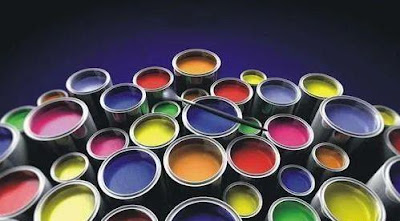Many customers seem to have some doubts about printing of various packagings, such as the minor color difference between the of the printed colors and those of the artwork, the difference between the CMYK printing and the spot colors, etc., then our issue will focus on this type of printing. Below article is going to address such issues and other pre-printing knowledge.
Pre-printing, Printing, and Post-printing are the three major processes involved in modern prints. Each process directly affects the normal operation of the subsequent ones. Success of packaging printing product cannot do without the scientific and reasonable each-stage processing design.
1. Spot color printing:
It refers to printing a certain Pantone color with a special pre-mixed ink, which is brighter in effect than the mixed color of four colors(CMYK), in offset printing. Any specific spot color can be realized, but gradient colors cannot be achieved through spot color printing. If necessary, CMYK 4C printing can be added. Besides, for large-area dark-color prints, it'll be difficult for CMYK printing process to achieve desired effect. Because the ink layer will too thick (with multiple overlays of color ink), while the spot color printing process only needs print one color.
2. CMYK 4-color offset printing:
The so-called four colors are: cyan (C), magenta (M), yellow (Y) and black (K). All other colors can be mixed by these four inks, and finally achieve a colorful print. It is the most common printing process, though the effect printed on different substrates is different.
3. Superposition of several color dots
4. Gray balance:
5. Ink:
Ink is an important material for printing, and its performance directly affects the printing quality and production efficiency of the product.
During printing, the fluid of ink has a certain influence on the quality and level of printed products. The printing process is essentially the ink transfer process. After the ink is output from the ink transfer roller, it is transferred to the inking roller through the ink distribution roller, and then transferred to the printing plate, then transferred to the blanket, and finally transferred to the substrate. , Complete the printing process. The ink with good transferability is evenly distributed when the ink film is separated on the ink roller of the printing machine. After multiple passes, it can increase the uniformity, ink density and fullness of the ink layer on the surface of the printing plate. When the ink transfer is poor, the amount of ink transferred to the printing plate or blanket will be insufficient, which will easily cause the graphic foundation of the printed matter to be exposed, forming a pattern phenomenon, or cause uneven ink color between the ink distribution rollers, and excessive ink accumulation, resulting in ink color density. , Flying ink, dry and conjunctival on the surface of the ink roller, etc.
In short, qualified printed matter must meet the following requirements: 1. Accurate overprinting; 2. Uniform ink color; 3. Full dots; 4. Ink balance; 5. No printing failures, such as smudges, scratches, petals, pastes, etc.; 6. Strictly faithful to the original manuscript. Printing companies must pursue high-quality printed matter to adapt to people's rising aesthetic concepts.







No comments:
Post a Comment